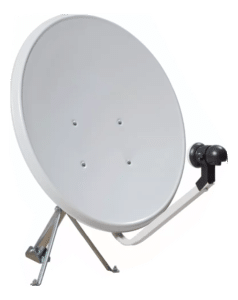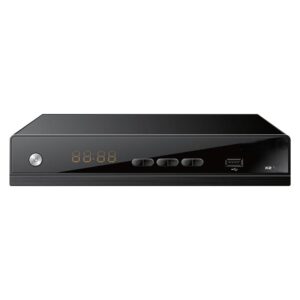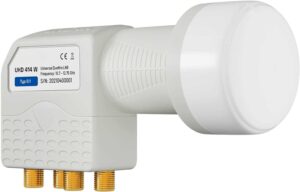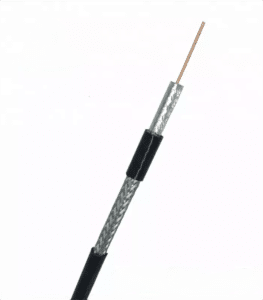Satellite television technology has always been an integral part of the television industry, delivering television programs to users’ homes by utilizing satellite signal transmission, thereby achieving global broadcast coverage. This article will delve into the basic working principles, signal transmission methods, and receiving equipment of satellite television technology to provide readers with a comprehensive understanding.
Basic Working Principles of Satellite Television Technology
The basic working principles of satellite television technology involve three main steps:
Signal Transmission:
Television signals are first transmitted from ground-based transmission stations to communication satellites in Earth’s orbit. These signals may include various television channels, audio channels, and other data.
Signal Transmission:
Satellites orbiting in space receive and retransmit the signals back to Earth. During transmission, the signals undergo processing and encoding to maintain signal quality and transmission efficiency.
Signal Reception:
Ground-based receiving antennas, known as satellite dishes, receive signals transmitted from the satellite. These receiving antennas transfer the received signals to satellite receivers, which decode and process the signals, converting them into visible television programs or audio channels.
For example, when you watch television through a home satellite receiving system, your satellite receiving antenna receives signals from the satellite and transmits them to your satellite receiver. The receiver decodes the signals, converting them into television channels that you can watch on your television. This allows you to access various television programs and channels via satellite television technology.
Signal Transmission Methods of Satellite Television Technology
The transmission of satellite television signals has undergone various evolutions, from analog to digital, each with its unique advantages and disadvantages. Here’s a brief overview of various transmission methods and their future prospects:
Analog Transmission:
Advantages: Relatively simple technology, low equipment costs.
Disadvantages: Lower picture and sound quality, inability to provide high-definition channels.
Prospects: Analog transmission is gradually being replaced by digital transmission and is expected to be phased out gradually.
Digital Transmission:
Advantages: Provides higher transmission efficiency and better picture and sound quality. Can transmit more channels and high-definition content.
Disadvantages: Requires higher requirements for receiving equipment and signal processing, may encounter signal interference and malfunction issues.
Prospects: Digital transmission is the current mainstream transmission method and will continue to develop, providing higher quality television programs and services with technological advancements.
High-Definition and Ultra-High-Definition Transmission:
Advantages: Provides higher resolution, clearer images, and more realistic sound, enhancing the viewing experience.
Disadvantages: Requires larger bandwidth and more advanced receiving equipment, with higher costs.
Prospects: With the continuous maturation of 4K and 8K technologies, high-definition and ultra-high-definition transmission will become the mainstream trend, offering users more realistic and immersive audiovisual experiences.
In the future, as technology continues to advance, the transmission methods of satellite television signals may continue to evolve. New technologies such as fiber optic transmission, efficient compression algorithms, and augmented reality may be introduced to further enhance transmission efficiency, image quality, and user experience. Additionally, with the development of artificial intelligence and the Internet, satellite television may also integrate with smart home and virtual reality fields, providing users with more intelligent and personalized services.
Receiving Equipment for Satellite Television Technology
The receiving equipment for satellite television signals typically includes the following main components:
Satellite Receiving Antenna:
Also known as a satellite dish or satellite dish, it is used to receive signals from the satellite. These antennas are usually installed outdoors to ensure good signal reception and can be adjusted in direction and angle as needed.
Satellite Receiver:
Also known as a satellite receiver or satellite decoder, it is a device used to receive and decode signals transmitted from the satellite receiving antenna. The receiver is usually connected to a television or other display device and converts the signals into visible television programs.
LNB (Low-Noise Block Downconverter):
An LNB is a small device installed on the satellite receiving antenna, used to receive satellite signals and transmit them to the satellite receiver. It amplifies and converts frequencies to ensure signal quality and reliability.
Cable Connection:
Used to connect the satellite receiving antenna and the receiver. These cables transmit received satellite signals, so they need to have good quality and shielding performance to ensure stable signal transmission.
Remote Control:
Used to control the satellite receiver. Users can use the remote control to select channels, adjust volume, and perform other settings to meet their viewing needs.
The combination of these receiving devices allows users to receive, decode, and watch television program signals from satellites.
By summarizing the above information, readers can gain a more comprehensive understanding of the basic principles, signal transmission methods, and receiving equipment of satellite television technology, enabling them to better utilize this technology for television viewing.











